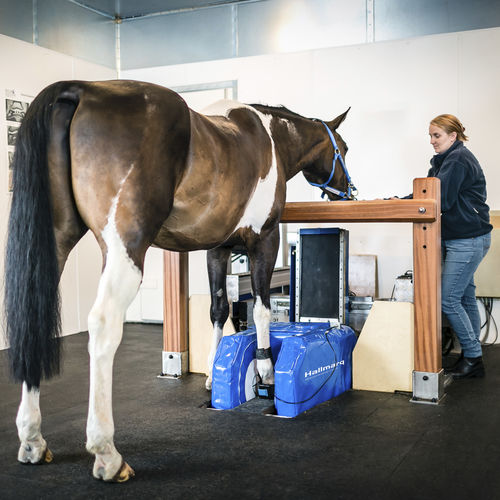
- Veterinary medicine
- Veterinary imaging
- Veterinary MRI system
- Hallmarq Veterinary Imaging

- Company
- Products
- Catalogs
- News & Trends
- Exhibitions
Veterinary MRI system EQ2for equines

Add to favorites
Compare this product
Characteristics
- System type
- veterinary MRI system
- Type of animal
- for equines
Description
The proven game changer in lameness diagnosis
MRI has for long been the imaging method of choice in human medicine, making it the gold standard for diagnosing pathology. Hallmarq’s Standing Equine MRI system (sMRI) brings the same diagnostic capability to equine clinical practice, with the equine patient at the forefront of every design decision.
Commonly, the outcome of a conventional lameness workup is a horse that blocks to a certain region but has no visible changes on X-ray or ultrasound. Response to treatment may be the only way to confirm or refute a potential diagnosis, and the horse may have to repeatedly return to the clinic for further examination. This pathway costs both time and money, while the patient may lose condition and the injury gets worse. By visualizing slices through tissue, MRI can quickly and precisely localize damage to both bone and soft tissues without the need for anesthesia.
Diagnostic in over 90% of cases, Standing Equine MRI (sMRI) identifies the specific cause of lameness
MRI is the only way to distinguish between the many different diseases underlying “navicular disease” in the foot
MRI of the fetlock and knee allows racehorse trainers to modify training to prevent poor performance and avoid the risk of serious injury
MRI without anesthesia
No risk to the horse makes it easier for your client to say yes to standing equine MRI than conventional “down” MRI.
Award-winning motion correction software
Designed to compensate for any slight movement of the limb during image acquisition. Faster scan times means more cases and lower costs.
VIDEO
Catalogs
No catalogs are available for this product.
See all of Hallmarq Veterinary Imaging‘s catalogs*Prices are pre-tax. They exclude delivery charges and customs duties and do not include additional charges for installation or activation options. Prices are indicative only and may vary by country, with changes to the cost of raw materials and exchange rates.


